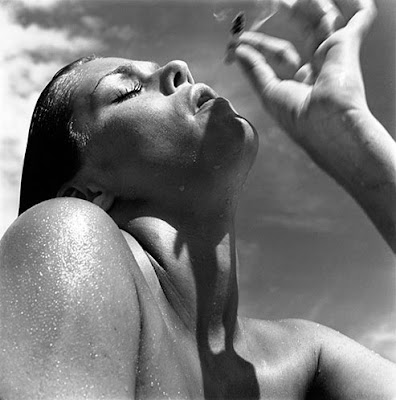
7/30/11
7/26/11
7/25/11
7/24/11
I will endeavor to summarize the highly complex and sophisticated system of spiritual training outlined by Don Juan in Tales of Power. The aim of this training is to produce an impeccable warrior - that is, a being who is at all times completely in possession of himself. The warrior is concerned only with expressing the totality of himself, not with praise or support from others. He neither seeks nor admits a master. The warrior's state is achieved with the aid of a teacher and a benefactor. To understand the respective roles of teacher and benefactor, one must consider the concepts of the tonal and the nagual, which are basic to the warrior's path. The tonal is the sum of any individual's perceptions and knowledge, everything he can talk about and explain, including his own physical being.
The nagual is everything outside the tonal: the inexplicable, the unpredictable, the unknown. The nagual is everything that cannot be talked about or explained, but only witnessed. The sudden irruption of the nagual into the tonal can be lethal unless the student is carefully prepared. The teacher's role is to clean up and strengthen the tonal, so that the student is able to deal with the nagual which the benefactor will then demonstrate. The teacher and the benefactor show the student how to reach the unknown, but they cannot predict what will happen when he does reach the nagual. The nagual is by its nature unpredictable, and the whole training is extremely dangerous. While the tonal, the totality of conscious existence, shapes the individual being, the tonal is in turn shaped by the nagual, by everything it is not, which surrounds it like a mold. The tonal tends to shut out and deny the nagual, which takes over completely in the moment of death.
If we see the nagual as the unknown, the unpredictable and unexplainable, the role of the artist is to make contact with the nagual and bring a part of it back into the tonal in paint or words, sculpture, film, or music. The nagual is also the area of so-called psychic phenomena which the Buddhists consider as distractions from the way of enlightenment. Buddhism and the teachings of Don Juan are simply not directed towards the same goals. Don Juan does not offer any final solution or enlightenment. Neither does the artist.
–William S. Burroughs, from CoEvolution Quarterly Spring 77
The nagual is everything outside the tonal: the inexplicable, the unpredictable, the unknown. The nagual is everything that cannot be talked about or explained, but only witnessed. The sudden irruption of the nagual into the tonal can be lethal unless the student is carefully prepared. The teacher's role is to clean up and strengthen the tonal, so that the student is able to deal with the nagual which the benefactor will then demonstrate. The teacher and the benefactor show the student how to reach the unknown, but they cannot predict what will happen when he does reach the nagual. The nagual is by its nature unpredictable, and the whole training is extremely dangerous. While the tonal, the totality of conscious existence, shapes the individual being, the tonal is in turn shaped by the nagual, by everything it is not, which surrounds it like a mold. The tonal tends to shut out and deny the nagual, which takes over completely in the moment of death.
If we see the nagual as the unknown, the unpredictable and unexplainable, the role of the artist is to make contact with the nagual and bring a part of it back into the tonal in paint or words, sculpture, film, or music. The nagual is also the area of so-called psychic phenomena which the Buddhists consider as distractions from the way of enlightenment. Buddhism and the teachings of Don Juan are simply not directed towards the same goals. Don Juan does not offer any final solution or enlightenment. Neither does the artist.
–William S. Burroughs, from CoEvolution Quarterly Spring 77
Labels:
Carlos Castaneda,
William S. Burroughs
7/22/11
7/17/11
7/16/11
7/8/11
drugs and contingency
There are at least two experiences of the relation between psychedelic drugs and the idea of contingency. Let's say that one is called the coercive experience, and the other is called the dispersive.
The coercive experience is paranoiac, conspiratorial. It is ontologically suspicious. It is coercive because it is interrogatory, and more often than not, is forcefully searching for a foregone conclusion. The coercive is a great architect, building meaning upon meanings, in the way the Egyptians must have built the pyramids: with a great arsenal of violence. The coercive is religious, occult, reverent. It produces symbols by utilizing the capacity for psychedelics to temporarily erase your world. Anything that wanders into your space after your world-erasure is capable of adopting an auratic glow, because of the isolated nature of your encounter with it, and as part of the coercive's erasure of contingency, the sign before you becomes destiny.
At its most defective, the coercive is based on an irrational belief that self-authorizes the creation of a cosmos and then covers its tracks. The defective mode of the coercive is religious mania, the healthy mode, artistic creation.
The coercive works by attempting to gather the Many into the One. The dispersive works in the opposite direction, splitting unities into multiplicities. The dispersive views phenomena in the world not with suspicion, but with skepticism. The dispersive suspects that ontological inconsistencies can arise: I arrive at the office and it does not surprise me if my office were suddenly on the opposite end of the hall. This is the same lack of surprise, says Picasso, he would feel if, in the bath, his body suddenly dissolved into atoms.
The dispersive recognizes and investigates contingency by feeling the absurdity behind every particular and the potential for it to have been otherwise, to have played out a different way, belong to an alternate constitution of reality. The defective mode of the dispersive finds itself splintered off into some dead-end corner of the multiverse, unable to trace its way back to the collective stream of human experience. Dispersive experience's healthy mode finds its outlet in speculation. Its speculative regard for potentiality, which considers unrealized possibilities as real as mere actuality, makes it closely akin to science fiction.
7/5/11
Subscribe to:
Posts (Atom)













